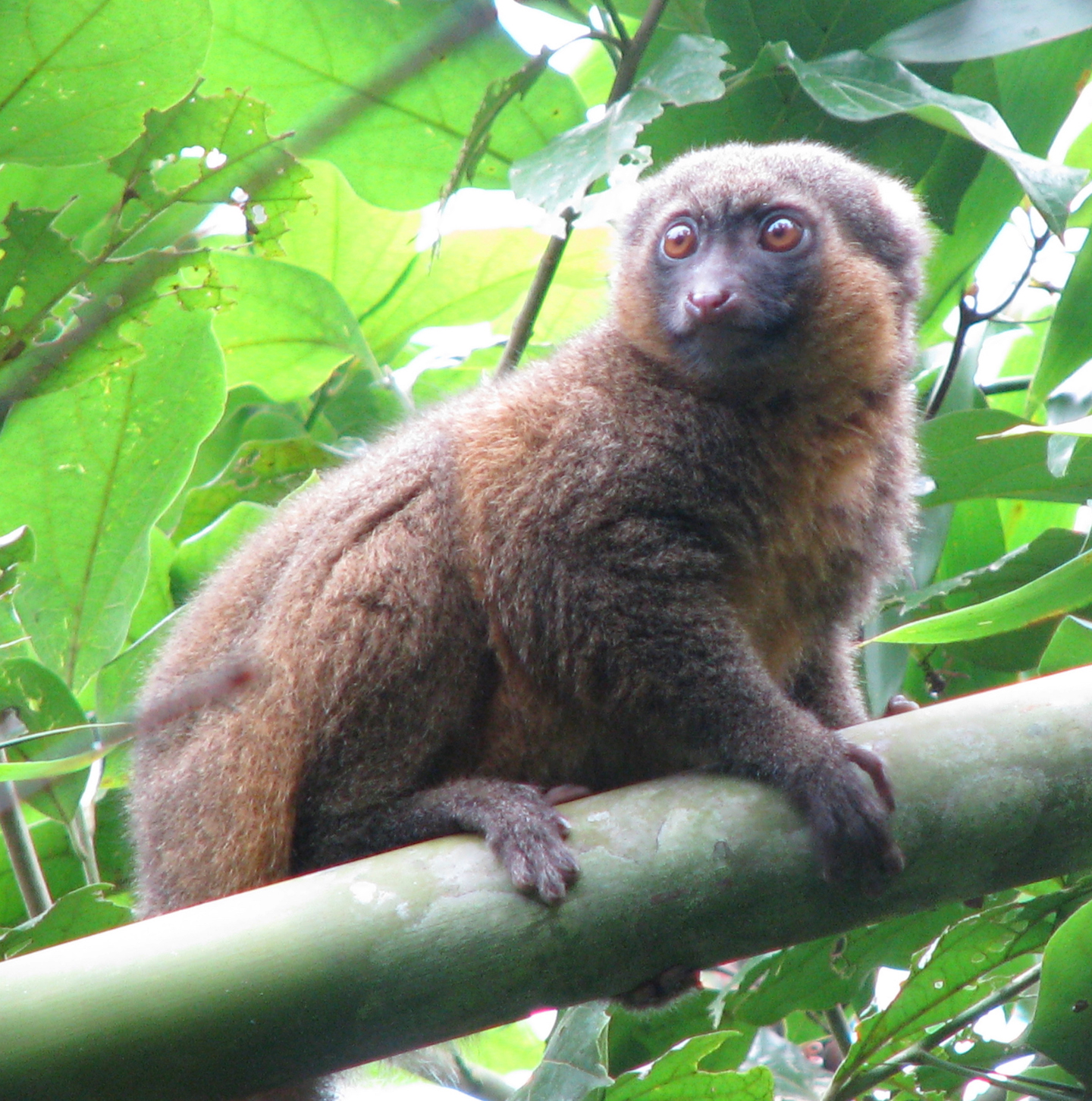By Wes Boone, PhD student, Wildlife Ecology & Conservation Dept.
Madagascar is a land of endemism and anthropogenic destruction. In the ~88 million years since Madagascar separated from the Indian sub-continent, both plants and animals have been evolving in new and exciting ways. It is estimated that 90% of all plant and animal species inhabiting Madagascar are found nowhere else. Lemurs, an endemic clade of primates, are perhaps Madagascar’s most well-known wildlife inhabitants and they exemplify the challenges facing conservationists in Madagascar. Scientists have discovered the remains of 17 lemur species believed to have gone extinct since humans arrived on Madagascar 2,000 years ago. Extant species have also declined, likely in response to a 90% reduction in natural forest cover caused by human inhabitants. As of 2014, 93 of Madagascar’s 105 known lemur species and subspecies were classified as Critically Endangered (24), Endangered (49), or Vulnerable (20) by the International Union for Conservation of Nature.

When Dr. Pat Wright was offered the chance to conduct research in Madagascar, the country was largely closed off to the western world. Madagascar had allied with the Eastern Bloc, and subsequently citizens from many western countries were barred from entering the country. One fortunate exception to this rule was that biologists were granted access. So, in 1986, with support from Duke University, Dr. Wright flew to a land that she and most outsiders knew little of in search of a lemur species many thought was already extinct. Her search for the greater bamboo lemur would prove fruitful in many ways. The greater bamboo lemur was found to still exist and the golden bamboo lemur, a species previously unknown to science, was discovered. Arguably of equal importance was that lemurs, wildlife, and the people of Madagascar gained a powerful advocate in Dr. Wright.

In 1991, Dr. Wright led a successful bid to preserve the only known habitat of the greater bamboo lemur and the golden bamboo lemur as Ranomafana National Park. Through this action a trained ecologist became something of a renaissance woman. Creation and administration of the park required securing outside funds, lobbying domestic and international politicians, and working hand-in-hand with local communities. A key component of Dr. Wright’s success in Madagascar may be her approach to working with native peoples. She places great emphasis on the fact that decisions were made in collaboration with the communities that surround Ranomafana National Park, instead of for them. This approach meant that everyone shared credit for success, but everyone also equally shared responsibility when results were not desirable. Therefore, setbacks were not blamed solely on Dr. Wright’s team and locals did not grow to distrust them.
Realizing that tying prosperity to conservation may be the only way to save Madagascar’s natural resources in perpetuity, Dr. Wright has helped to build an ever-growing eco-tourism industry. The success of these efforts may be seen in the desire of many school children to one day work as a guide – a coveted, lucrative career. Over the course of her time in Madagascar, Dr. Wright’s efforts have increasingly taken on a humanitarian hue. She has worked with international aid agencies, foreign governments, and private donors to secure funding for schools, sustainable agriculture, healthcare, and even waste disposal. These services have been provided with the understanding that their continuance is contingent on the continued preservation of Ranomafana National Park. Thereby, all locals have a vested interest in preserving the park’s natural resources.
The bond between Dr. Wright’s team and the local community is best exemplified by their protection of the park and its employees throughout several periods of domestic upheaval. Most recently, following a coup d’état in 2009 when foreign researchers in other parts of Madagascar were forced to flee due to safety concerns, Dr. Wright was steadfast; she knew the community supported her because she whole-heartedly supported the community. Greater than two decades (at that time) of collaboration had resulted in enduring trust, trust that benefitted everyone. Although many previously available forms of foreign aid dried up in response to the coup, Dr. Wright was able to secure the necessary funds to keep operations going. Employees kept their jobs, schools stayed open, and their enduring bond was once again strengthened. The development of this bond, engineered by Dr. Wright, is a blueprint for successful community-based conservation in Madagascar and abroad.

All of this is to say nothing of Dr. Wright’s numerous scholarly accolades. Dr. Wright earned a Bachelor of Arts from Hood College and a PhD in Anthropology from the City University of New York in 1966 and 1985, respectively. She has authored and co-authored over 180 scientific publications; including 128 peer reviewed articles and 16 book chapters. Dr. Wright founded the Centre ValBio Research Campus in Ranomafana National Park, Madagascar in association with Stony Brook University, where she has been a professor since 1991. Previously, Dr. Wright was a professor at Duke University from 1983-1991. She has received numerous distinguished awards including the Commandeur Medal from the government of Madagascar, Distinguished Primatologist Award from the American Society of Primatologists, and the Indianapolis Prize for Conservation. Dr. Wright serves on multiple committees, including the Scientific Advisory Board for the Duke Lemur Center and the International Union for the Conservation of Nature Species Survival Commission’s Primate Specialist Group.
Check out IMAX’s Island of Lemurs, featuring Dr. Wright’s research:
http://islandoflemurs.imax.com/
 0
0
